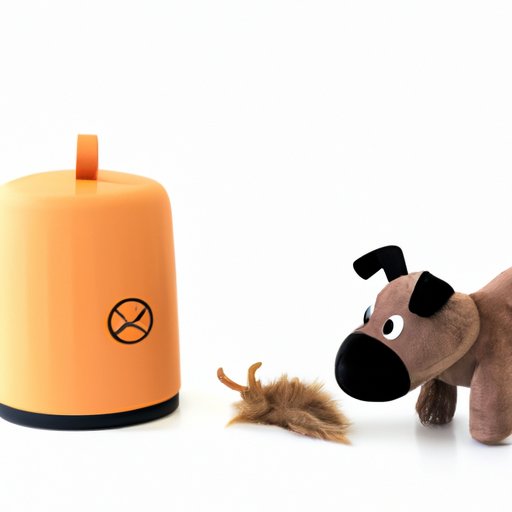Introduction
Potty training a dog is an essential part of pet ownership. It is a process that requires patience, consistency, and above all, positive reinforcement. Your dog needs to learn where it is acceptable to go potty while also understanding that accidents are unacceptable. This article aims to provide dog owners with a step-by-step guide to potty training, along with helpful tips and techniques to make the process as smooth and stress-free as possible.
Step-by-Step Guide
The key to successful potty training is consistency. Establishing a routine and following it daily will help your dog develop a good habit quickly. Here are some steps to follow:
- Establish a routine: choose a particular time of the day when you want your dog to go out, such as after meals or after waking up. Once you have established a routine, stick to it and take your dog out at the same time every day.
- Choose a spot: designate a potty spot for your dog outside and take them to the same location every day. Be sure to praise your dog when they go potty in the designated area to reinforce the behavior.
- Reward your dog: When your dog goes potty in the designated spot, reward them with praise and treats. This reinforces the positive behavior and encourages them to continue to go in the correct spot.
- Correcting accidents: Accidents will happen, especially in the early stages of training. When this happens, take your dog outside to the designated spot immediately without any reward or punishment. Just be patient and consistent with the process.
Using Positive Reinforcement
The use of positive reinforcement will help speed up the potty training process while making it easier for both you and your dog. Here are some training techniques centered around positive reinforcement:
- Rewards and treats: Reward your dog with treats when they do something right.
- Praise and affection: Praise your dog every time they go potty in the designated spot and give extra attention or affection, according to what they like the most.
- Clicker training: Use a clicker to identify and mark good behavior such as going potty in the designated spot. Follow up with a reward or praise for best results.
Common Mistakes to Avoid
Making common mistakes is part of the learning process but following a few tips can make the process smoother and more successful. Here’s what to avoid:
- Not being consistent with the training routine: It is important to establish a routine and follow it every day.
- Punishing the dog for accidents: Punishing your dog for accidents will only make them afraid of going potty in front of you.
- Not having realistic expectations: Be patient and allow some mistakes to happen in the early stages. Remember that every dog is different, and the potty training process will vary from one to another.
Identifying Behavioral Issues
Behavioral issues can interfere with successful potty training. Therefore, it is essential to identify and address them to ensure your dog is comfortable and well-behaved. Here are some tips to detect and correct these issues:
- Separation anxiety: When dogs feel anxious when alone, they may have accidents. To address this issue, gradually increase the time your dog spends alone, provide extra toys and entertainment, and give them something they can find comfort in while you’re away.
- Fear or phobia of going outside: Dogs may be afraid to go potty outside due to various reasons like noises and various stimuli that they are not familiar with. Try to make your dog more comfortable by associating going potty outside with rewards and positive reinforcement like treats and affection.
- Health problems: Health problems such as urinary tract infections or gastrointestinal issues can cause frequent accidents. Be mindful of your dog’s behavior and any changes; if in doubt, consult your vet.
Tips for Dog Owners with Busy Schedules
Training a dog is a full-time job that requires a lot of commitment and time. However, if you have a busy schedule or live in an apartment, these tips can make potty training easier:
- Hiring a dog walker or pet sitter: Hire a dog walker or pet sitter to take your dog out at the designated time if you are not available.
- Using indoor potty training pads: Indoor potty training pads can be helpful in training your dog to go in a specific spot even if you cannot take them out.
- Crate training: Crate training can be helpful in potty training. Dogs are less likely to soil their sleeping area, and it can be a space that they find comfortable and safe.
Dealing with Unexpected Challenges
Unexpected challenges may arise during the potty training process, such as regression or resistance. Here are a few tips to handle these challenges:
- Reinforce positive training techniques: Reinforce positive behavior and do not punish your dog for having accidents.
- Adjust the training routine: You may need to adjust the routine to accommodate your dog’s changing needs and schedule.
- Seek professional help if necessary: If the behavior problems persist, consider speaking to a professional dog trainer or behavioral specialist.
Conclusion
Potty training your dog requires patience, consistency, and positive reinforcement. Remember that every dog’s potty training process is different, and the key to success is to remain patient and consistent. Use the tips and techniques provided in this article, and you will be on your way to having a potty-trained dog in no time.
